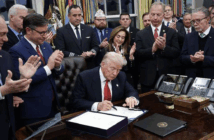Welcome to the CavasShips Podcast with Christopher P. Cavas and Chris Servello…a weekly podcast looking at naval and maritime events and issues of the day – in the US, across the seas and around the world.
This Week…Tuesday December 7 marks the 80th anniversary of the 1941 Japanese attack on the US Fleet at Pearl Harbor. The surprise attack caught a fleet in harbor just waking up to start its Sunday morning, and more than 2,400 Americans died in the raid. The slogan Remember Pearl Harbor was coined that very day and has rung down through the decades as a rallying cry to not be caught napping by a determined enemy. We’ll talk with two noted naval professionals about what that legacy means – or should mean – to today’s Navy.
In this Week’s Squawk Chris Cavas discusses the value of keeping a major fleet forward-deployed around the globe.
Please send us feedback by DM’ing @CavsShips or @CSSProvision or you can email chriscavas@gmail.com or cservello@defaeroreport.com.
This Week’s Naval Round Up:
The USS HARRY S TRUMAN Carrier Strike Group deployed from Norfolk on December 1. Carrier Air Wing One is embarked aboard the ship. In addition to the cruiser SAN JACINTO, four destroyers deployed with TRUMAN, accompanied by the Norwegian frigate FRIDTJOF NANSEN, the first time a Norwegian warship has deployed with a US carrier strike group.
The MQ-25 Stingray unmanned test aircraft was craned aboard the carrier USS GEORGE H W BUSH at Norfolk on November 30 to begin a series of deck-handling trials. The Boeing-owned plane, the first unmanned jet aircraft designed to operate from aircraft carriers, will remain on board for several weeks. The BUSH is to carry out some of the trials at sea to get a feel for how the aircraft handles on a wind-blown flight deck.
The Arleigh Burke-class destroyer FRANK E PETERSEN JR was delivered to the US Navy November 30 from shipbuilder Huntington Ingalls Industries at Pascagoula, Mississippi. The Flight IIA destroyer is named for the United States Marines Corps’ first African American aviator and general officer. Frank Petersen flew more than 350 combat missions during the Korean and Vietnam wars.
Taiwan revealed on December 2 that it held a keep ceremony on November 16 to mark the beginning of construction of its first domestically-built submarine – a development that China strenuously protests. The sub is being built at CSBC Shipbuilding Corp in Kaohsiung and is to be delivered in 2024. A number of countries are reported to be providing significant behind-the-scenes assistance in the construction of the submarine.
The Korean parliament on December 3 approved more than $6 million to begin the preliminary design of a new light aircraft carrier, dubbed CVX. The hotly debated move aims at producing a ship that would be operational by 2033. Those opposed to the project fear costs will be exorbitant and, in the word of one opponent, the ship will be a “money-eating hippopotamus.”
Meanwhile, China on November 11 commissioned its fourth Type 055 NANCHANG, or Renhai, destroyer. The ships, which displace around 12,000 tons, are much more heavily armed than previous Chinese Navy surface warships. The first ship was commissioned in early 2020, and at least a dozen more are under construction in two shipyards.
And that’s a look at naval news this week.
SQUAWK BOX CAVAS
The cost of keeping a major fleet forward-deployed around the globe week after month after year is unarguably immense. Since shortly after the end of World War Two, the United States has paid that cost – buying the ships and aircraft, supporting their maintenance, and training and supporting the people to keep it all going. There is no question that continued support of those efforts can be exhausting – not just for the military, but for politicians and citizens as well.
Other nations tried to maintain a similar naval posture. The British Royal Navy all but guaranteed order on the world’s waves for nearly after 150 years after the Battle of Trafalgar, but the crumbling post-war British Empire – not to mention the rise and predominance of the U S Navy – led the British to dramatically and drastically pull back by the mid-1960s and essentially go home. After that, the Soviets tried to challenge the US on the high seas, and were themselves bankrupted by the effort, even though they never came close to parity.
Now China is engaged in an immense effort to build a Navy not just to rival, but to outlast and out-do the US Navy. They are not there yet, but every month sees them improve in any number of areas. Countering that rise can be – it is – exhausting, and that weariness is evidenced in former Deputy Defense Secretary Bob Work’s piece in this month’s Naval Institute Proceedings magazine titled “A Slavish Devotion to Forward Presence Has Nearly Broken the US Navy.” Essentially, Work argues in that piece that the US doesn’t have the will to pay the price to maintain its world wide presence, and is willing to pay only for a Navy that just stays home and only goes out from time to time, or when needed.
I couldn’t disagree more with that strategy, but it is clear the nation – congress and the people – are not paying the attention necessary to pay the price of continuing policies that have worked for more than 7 decades. The debate needs to be held – hopefully a debate that ends with a consensus that freedom really isn’t free, that sometimes you need to pay for it.
And yes, that phrase can be taken with more than one meaning.




